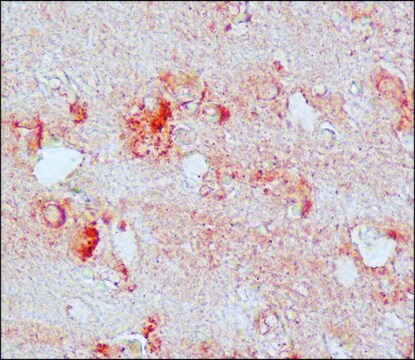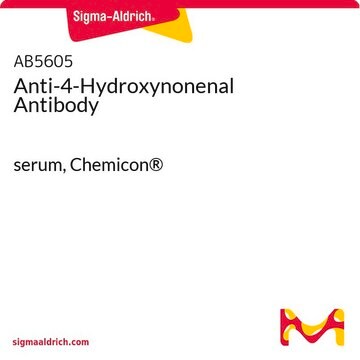487923
Anti-Nitrotyrosine Mouse mAb (CC22.8C7.3)
liquid, clone CC22.8C7.3, Calbiochem®
About This Item
Produits recommandés
Source biologique
mouse
Niveau de qualité
Forme d'anticorps
purified antibody
Type de produit anticorps
primary antibodies
Clone
CC22.8C7.3, monoclonal
Forme
liquid
Contient
≤0.1% sodium azide as preservative
Réactivité de l'espèce (prédite par homologie)
all
Fabricant/nom de marque
Calbiochem®
Conditions de stockage
OK to freeze
avoid repeated freeze/thaw cycles
Isotype
IgG2b
Conditions d'expédition
wet ice
Température de stockage
−20°C
Modification post-traductionnelle de la cible
unmodified
Informations sur le gène
human ... NOS1(4842)
Description générale
Immunogène
Application
Avertissement
Forme physique
Reconstitution
Remarque sur l'analyse
Mouse macrophages treated with peroxynitrite
Autres remarques
Beckman, J.S., et al. 1994. Biol. Chem. Hoppe-Seyler375, 81.
Informations légales
Not finding the right product?
Try our Outil de sélection de produits.
Code de la classe de stockage
10 - Combustible liquids
Classe de danger pour l'eau (WGK)
WGK 1
Point d'éclair (°F)
Not applicable
Point d'éclair (°C)
Not applicable
Certificats d'analyse (COA)
Recherchez un Certificats d'analyse (COA) en saisissant le numéro de lot du produit. Les numéros de lot figurent sur l'étiquette du produit après les mots "Lot" ou "Batch".
Déjà en possession de ce produit ?
Retrouvez la documentation relative aux produits que vous avez récemment achetés dans la Bibliothèque de documents.
Notre équipe de scientifiques dispose d'une expérience dans tous les secteurs de la recherche, notamment en sciences de la vie, science des matériaux, synthèse chimique, chromatographie, analyse et dans de nombreux autres domaines..
Contacter notre Service technique








